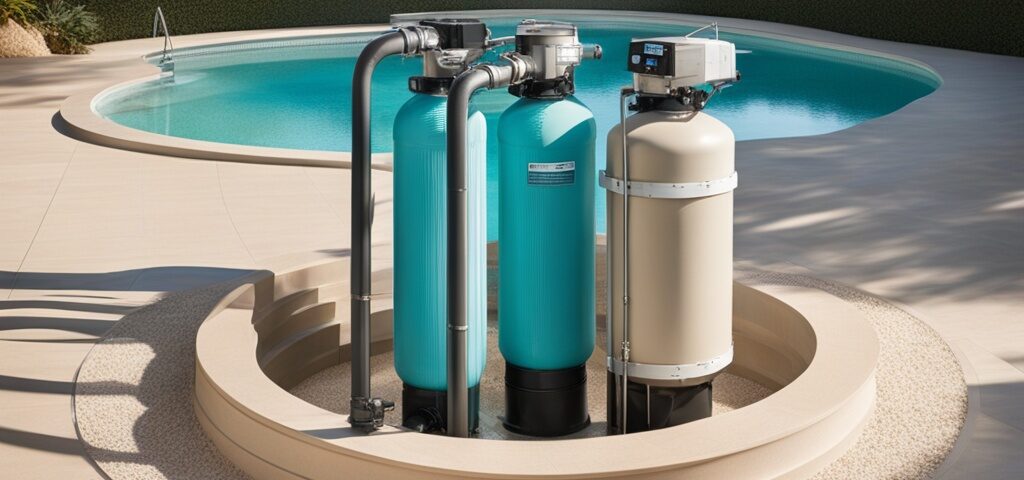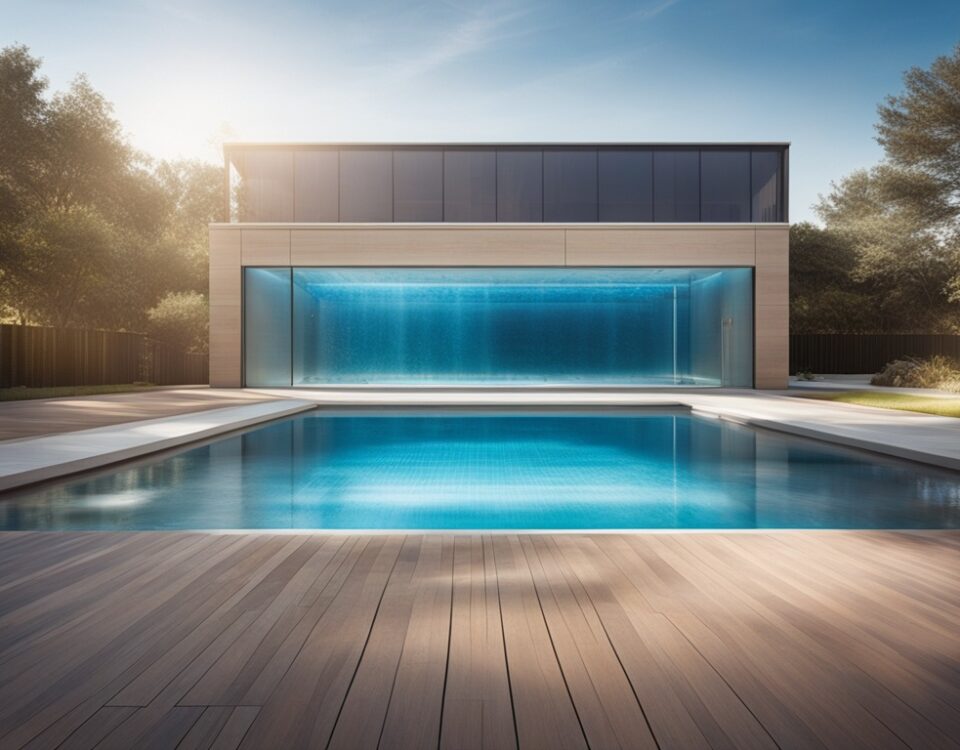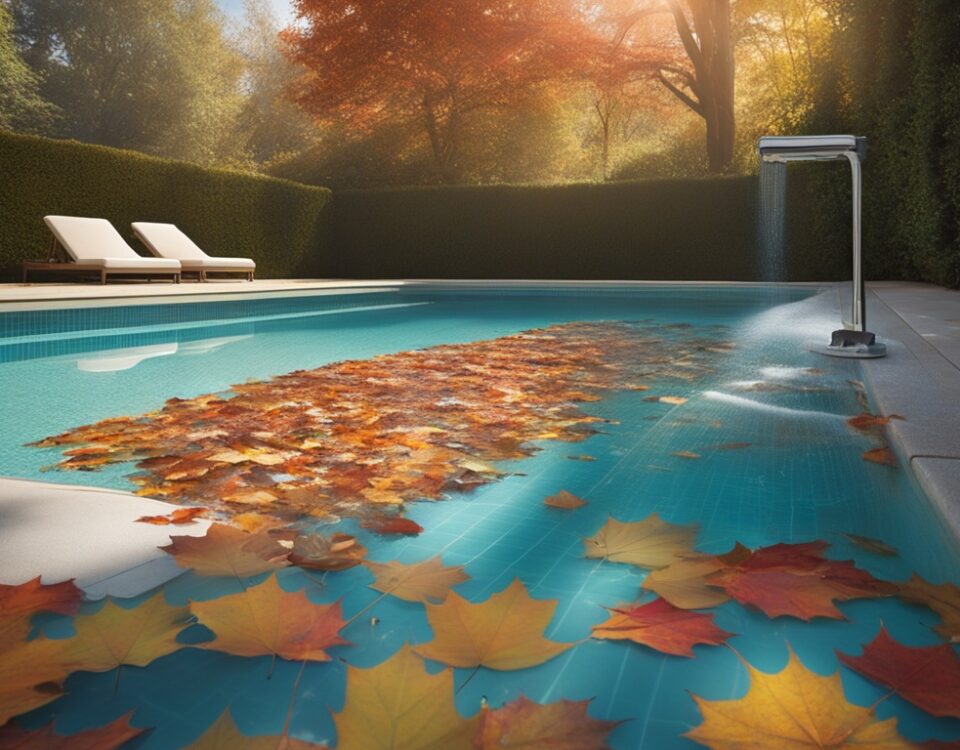Filter Battle: Sand vs Cartridge – The Ultimate Showdown

Unveiling Vinyl Liner Pools: Advantages and Drawbacks Revealed
May 9, 2025
Ultimate Guide: Selecting the Top Pool Deck Materials for Your Oasis
May 9, 2025Overview of Pool Filters
Maintaining a swimming pool involves a myriad of responsibilities, yet few are as crucial as ensuring the water remains clean and healthy. *The importance of pool filters cannot be overstated*: they serve as the first line of defense against debris, dirt, and microorganisms that would otherwise compromise the quality of water. By regularly filtering the water, pool owners can enjoy a sanitary swimming environment, free from contaminants that can lead to various health concerns.
When it comes to selecting an appropriate pool filter, two of the most popular options that homeowners frequently consider are sand filters and cartridge filters. Each of these filter types brings its unique advantages and characteristics, making it essential for pool owners to evaluate their specific needs to determine the best fit. Understanding the fundamental differences between these filtering systems can significantly enhance the performance and longevity of your pool.
The Role of Pool Filters in Water Quality
Pool filters are indispensable in achieving optimal water clarity and safety. They function by trapping particulate matter, such as leaves, insects, and tiny algae, thus ensuring the water circulates through a clean system. Without an effective filtration mechanism, the water can quickly turn murky, leading to algae blooms and bacteria proliferation. Furthermore, *effective pool filtration plays a vital role in balancing chemicals*, enhancing the efficiency of sanitizers that are essential for preventing illness and ensuring an ideal swimming experience.
Sand Filters: Tried and Tested
Sand filters have been a staple in the pool maintenance industry for decades. *These filters operate by passing water through a bed of specially graded sand*, which effectively captures dirt and debris. One of the most appealing aspects of sand filters is their durability; typically, they only require backwashing every few weeks, making them a low-maintenance option for pool owners. Moreover, sand filters can handle larger volumes of water, making them suitable for pools of various sizes.
Cartridge Filters: The Efficiency of Simplicity
On the other hand, cartridge filters have gained popularity in recent years, primarily due to their ease of use and energy efficiency. *Cartridge filters utilize a replaceable filter element* that captures contaminants as the water flows through it. One of the major benefits of cartridge filters is that they do not require backwashing, leading to significant water conservation. Additionally, they tend to provide superior filtration, effectively trapping smaller particles that might escape a sand filter.
| Feature | Sand Filters | Cartridge Filters |
|---|---|---|
| Maintenance Frequency | Backwash every few weeks | Replace cartridge every 1-2 years |
| Initial Cost | Generally lower | Moderate, varies by brand |
| Filtration Level | Good for large debris | Excellent for fine particles |
| Water Usage | More water used for backwashing | Minimal water usage |
In conclusion, the choice between sand and cartridge filters ultimately hinges on the specific requirements of your pool, your budget, and your maintenance preferences. By thoroughly understanding the unique features and benefits associated with each type, pool owners can make informed decisions to ensure their swimming pools remain a bastion of cleanliness and enjoyment.
Sand Pool Filters: Pros and Cons
Sand pool filters operate by utilizing a tank filled with specially graded sand to filter out dirt and debris from pool water. When water is drawn into the filter, it passes through the layers of sand, which trap particles and impurities, allowing only clean water to return to the pool. This simple yet effective design makes sand filters a popular choice among pool owners.
Advantages of Sand Pool Filters
One of the most significant advantages of sand pool filters is their *cost-effectiveness*. Compared to other filter types, such as cartridge or diatomaceous earth filters, sand filters tend to have a lower initial purchase price and require less maintenance over time. The longevity of sand filters also contributes to their affordability, as a well-maintained sand filter can last for many years without replacement.
Furthermore, sand pool filters require minimal upkeep. Backwashing, a method used to clean the filter by reversing the water flow, is relatively straightforward. This process typically only needs to be performed every few weeks, depending on usage and debris levels in the pool. As a result, pool owners can spend less time on maintenance and more time enjoying their swimming environment.
Drawbacks of Sand Pool Filters
Despite their advantages, sand pool filters do have some drawbacks. For instance, the need for *backwashing* can be seen as a disadvantage, as it requires water waste and can lead to increased water consumption. Each backwash cycle uses a significant quantity of water, which may become a concern for environmentally conscious owners or those living in areas with water restrictions.
Another potential drawback is the *occasional need for sand replacement*. Over time, the sand media may become less effective at trapping debris due to particle degradation and buildup of oils and contaminants. Typically, sand should be replaced every 3 to 5 years, adding an additional maintenance cost to pool ownership. Moreover, some pool owners may find the replacement process to be labor-intensive, as it requires draining the filter and introducing new sand.
Performance Considerations
In terms of filtration efficacy, sand filters may not achieve the same level of clarity as their cartridge or diatomaceous earth counterparts. Sand filters are generally effective at capturing larger particles, but they may struggle with finer debris. This can result in a slightly less pristine appearance of pool water compared to pools treated with more advanced filtration systems.
Conclusion on Sand Pool Filters
Ultimately, sand pool filters present a *balanced approach* for pool maintenance, encapsulating both commendable benefits and some notable limitations. By understanding these factors, pool owners can make more informed decisions about their filtration options and choose the system that best suits their specific needs and circumstances.
Cartridge Pool Filters: Pros and Cons
When it comes to maintaining a pristine swimming pool, *cartridge pool filters* have gained popularity for their efficiency and effectiveness in water purification. Unlike their sand counterparts, cartridge filters consist of a replaceable filtration element that captures debris and particles as water flows through. This sophisticated mechanism allows for *finer filtration*, effectively trapping even the smallest contaminants, ensuring that your pool water remains crystal clear and inviting.
Advantages of Cartridge Pool Filters
One of the primary benefits of *cartridge pool filters* is their ability to filter out finer particles. This characteristic is particularly appealing to pool owners who prioritize water clarity and hygiene. The filter’s design allows for the capture of tiny dirt and debris, such as pollen, bacteria, and algae, which often elude sand filters. Such precision contributes to a cleaner swimming environment and enhances the overall swimming experience.
Moreover, cartridge filters are celebrated for their *ease of installation and maintenance*. Setting up a cartridge filter is often a straightforward task, making it accessible even for novice pool owners. Additionally, the maintenance process is relatively simple; all that is typically required is a thorough rinse of the cartridge with a garden hose. This ease of upkeep allows pool owners to enjoy a sparkling pool without dedicating excessive time to maintenance chores.
Considerations and Drawbacks
Despite their myriad advantages, *cartridge pool filters* do come with some drawbacks. One notable concern is the higher initial cost associated with purchasing these systems compared to their sand filter counterparts. While the long-term performance may justify the investment, the upfront expense can deter some budget-conscious pool owners. It’s crucial to weigh this initial financial outlay against the potential long-term savings on chemicals and maintenance.
Additionally, users should be aware that cartridge filters may require *more frequent cleaning and cartridge replacement*. Ideally, the filter cartridges should be cleaned every few weeks, depending on pool use and local environmental factors. Furthermore, depending on the quality of the cartridge and pool usage, replacements may be necessary every 1-3 years. This requires ongoing vigilance on the part of the pool owner, as well as budgeting for periodic replacements, thus adding to the operational costs of maintaining the pool.
Effectiveness in Various Conditions
Another critical consideration is the *efficiency of cartridge filters in varying pool conditions*. While they excel in capturing fine particles, they may struggle with larger debris, such as leaves and twigs, which can clog the filter more quickly. In areas with heavy rainfall or frequent debris, sand filters might outperform cartridge filters, as they typically require less frequent cleaning when dealing with larger contaminants.
In summary, while *cartridge pool filters* represent a modern and effective solution for pool maintenance with superior filtration capabilities, potential buyers should carefully deliberate on their needs and weigh the pros and cons. Understanding both the operational costs and the maintenance demands will help in making an informed decision that aligns with the specific requirements of the pool owner and the unique conditions of their swimming environment.
Performance Comparison
Filtration Quality
When it comes to efficiency, the choice between sand and cartridge pool filters can significantly influence the cleanliness of your swimming pool. Sand filters typically have a micron rating of about 20-40 microns, meaning they effectively remove larger debris like leaves and dirt. However, they struggle with finer particles, which can lead to cloudy water. In contrast, cartridge filters operate at a much finer filtration level, ranging from 5 to 20 microns. This characteristic allows them to capture even the tiniest impurities, thus ensuring that the water remains crystal clear and inviting.
Maintenance Requirements
Maintenance is another crucial consideration when evaluating the performance of these filters. Sand filters require backwashing to clear away trapped debris, which can be labor-intensive and leads to water wastage. Typically, this process should occur every few weeks, depending on pool usage and environmental factors. On the other hand, cartridge filters necessitate a relatively low-maintenance regimen. They only require periodic cleaning, typically every 4-6 weeks, and can simply be hosed down or soaked in a cleaning solution to maintain their efficiency. This lower maintenance frequency can be particularly appealing for homeowners looking for convenience.
Operational Costs
Considering the operational costs is also imperative when choosing between the two filter types. While sand filters are generally less expensive upfront, they can incur higher ongoing costs due to the need for chemicals to maintain water balance and the frequent backwashing process. In contrast, while cartridge filters may have a higher initial investment, their lasting filters (often lasting several years) can lead to lower long-term costs. Analyzing the total cost of ownership over several seasons can inform a more prudent financial decision regarding pool maintenance.
Environmental Impact
Living in an eco-conscious era, the environmental impact of pool filters is an essential factor worth considering. Sand filters require frequent backwashing, which not only wastes water but can also discharge contaminants into local watersheds. Meanwhile, cartridge filters are more environmentally friendly as they do not require backwashing, thus conserving water and minimizing the risk of contaminant runoff. This distinction makes cartridge filters a compelling choice for environmentally-minded pool owners.
Pool Size and Usage
Understanding the specific needs of your pool is vital when selecting a filter type. For larger pools or those with high bather loads, cartridge filters may be better suited due to their superior filtration capabilities and reduced maintenance needs. Conversely, for smaller pools or those that see less action, sand filters can adequately maintain clean water while being easy to operate. *Consideration should be given to factors such as pool size, frequency of use, and the type of debris present to select the most effective filtration system.*
Overall Efficiency
| Filter Type | Filtration Quality (microns) | Maintenance Requirements | Cost Effectiveness | Environmental Impact |
|---|---|---|---|---|
| Sand Filter | 20-40 | Backwashing every few weeks | Lower initial cost, higher ongoing costs | Water wastage from backwashing |
| Cartridge Filter | 5-20 | Cleaning every 4-6 weeks | Higher initial cost, lower long-term costs | More environmentally friendly |
Long-Term Cost Analysis
When considering the long-term costs associated with sand and cartridge pool filters, it is essential to meticulously evaluate not only the initial purchase price but also the ongoing maintenance and replacement expenses. Understanding these costs can significantly impact the overall effectiveness of your investment in pool filtration systems.
Initial Purchase Costs
The initial purchase price represents a considerable factor in the long-term cost equation. Sand filters typically range from $200 to $500, depending on the size and brand, while cartridge filters usually cost between $100 and $300. Although cartridge filters may seem more wallet-friendly at first, the overall cost should be analyzed with ongoing expenses in mind.
Maintenance Expenses
Maintenance is another critical aspect to consider. Sand filters require backwashing to ensure they function properly, which can potentially waste several gallons of water each time. This can translate to increased water bills over time. Additionally, sand must be replaced approximately every 3 to 5 years, costing around $40 to $100 depending on the quality of the sand. In contrast, cartridge filters generally only require periodic cleaning and replacement about every 2 to 3 years, resulting in lower overall maintenance costs, even though the cartridges can range from $15 to $100 each.
Replacement Expenses
Replacement expenses also play a significant role. With sand filters, while the sand itself is inexpensive, the filter unit typically lasts between 5 to 10 years. Consequently, you may find yourself investing in a new filter unit sooner than anticipated. On the other hand, cartridge filters, while less durable, can provide a notable lifespan depending on care. With proper maintenance such as regular cleaning, they can surpass their estimated lifespan, proving to be a more effective financial option in the long run.
Maximizing Lifespan
To optimize cost-effectiveness, it is vital to maximize the lifespan of both filter types. For sand filters, *regular backwashing* is paramount—doing so when the pressure gauge indicates a rise of 8 to 10 psi can maintain efficiency and significantly extend the filter’s life. Additionally, *seasonal maintenance*, including checking for leaks and replacing worn parts, can further ensure longevity.
Conversely, for cartridge filters, implementing a strict *cleaning schedule* is crucial. Cleaning the cartridges every few weeks can prevent dirt build-up, resulting in improved filtration and extended life. Also, using a gentle cleaner specifically designed for pool filters can be beneficial. Lastly, be sure to *avoid running the pump dry*, as this can lead to costly damages that may require replacing cartridges sooner than expected.
| Cost Aspect | Sand Filter | Cartridge Filter |
|---|---|---|
| Initial Purchase Price | $200 – $500 | $100 – $300 |
| Maintenance Frequency | Backwash regularly | Clean every few weeks |
| Replacement of Media | Every 3 to 5 years ($40 – $100) | Every 2 to 3 years ($15 – $100) |
| Longevity of Filter Unit | 5 to 10 years | 3 to 7 years |
Environmental Impact
When considering the environmental implications of pool filtration systems, one must evaluate both sand and cartridge filters through the lens of water conservation and energy consumption. The filtration method chosen can significantly influence the pool’s ecological footprint, with each system offering distinct advantages and disadvantages.
Water Conservation
Water conservation is a pivotal aspect where cartridge filters take a lead. These filters generally require less frequent backwashing, a process wherein a portion of the pool water is expelled to cleanse the sand, which can lead to considerable water loss. In contrast, *cartridge filters* only necessitate occasional cleaning with a hose, thereby promoting water retention and minimizing waste. In fact, studies indicate that switching from sand to cartridge filters can reduce pool water consumption by up to 30%.
Energy Consumption
Another critical factor is the energy consumption associated with each filtration type. Sand filters typically operate with high-capacity pumps that consume a substantial amount of energy during backwashing. Conversely, *cartridge filters* often require less energy due to their efficient operation, as they do not necessitate extensive backwashing. A *well-maintained cartridge system* can lead to a pronounced reduction in energy usage, aligning with eco-friendly practices while also lowering utility bills.
Eco-Friendly Practices
To further decrease the environmental footprint of pool filtration systems, adopting eco-friendly practices is essential. Implementing a variable-speed pump in conjunction with a cartridge filter can maximize energy efficiency, as these pumps adjust their speed according to the pool’s filtration needs. This adaptability not only conserves energy but also prolongs the lifespan of the filtration system.
Eco-Friendly Products
In addition to operational improvements, utilizing eco-friendly pool chemicals and *biodegradable cleaning agents* can enhance the sustainability of pool maintenance. It is critical to select products that are not only effective but also environmentally benign, minimizing chemical runoff that could harm local ecosystems. Furthermore, investing in a pool cover can significantly reduce evaporation and heat loss, thereby conserving water and energy.
Reducing Environmental Footprint
The choice of filtration system directly correlates with the environmental impact of pool upkeep. By investing in *cartridge filters* and concomitantly implementing green practices such as the use of *solar heating systems*, pool owners can cultivate an environment-friendly pool atmosphere. These changes, while beneficial on an individual level, collectively contribute to a more sustainable planet.
| Filtration Type | Water Usage | Energy Consumption | Maintenance Frequency |
|---|---|---|---|
| Sand Filter | Higher (due to backwashing) | Higher (requires more energy) | Regular (backwash needed) |
| Cartridge Filter | Lower (minimal water loss) | Lower (more efficient operation) | Less frequent (hose cleaning) |
Maintenance Tips and Troubleshooting
Proper maintenance of your pool filter is pivotal in ensuring that your pool water remains crystal clear and free from contaminants. Whether you’re utilizing a sand filter or a cartridge filter, understanding the specific upkeep and potential issues with each type is essential for prolonging their lifespan and optimizing performance.
Sand Filter Maintenance
To maintain the integrity of your *sand filter* , regular backwashing is crucial. This process involves reversing the flow of water through the filter to eliminate trapped dirt and debris. Ideally, backwash your filter when the pressure gauge indicates a rise of 8-10 psi above the normal operating pressure. In conjunction with this, ensure that you replace the sand every 3-5 years, as the effectiveness of filtration diminishes over time due to the breakdown of sand granules.
Cartridge Filter Maintenance
In contrast, *cartridge filters* necessitate a different maintenance approach. It is advisable to clean your cartridges every 4-6 weeks during the peak swimming season. This is accomplished by removing the cartridges and hosing them down to dislodge dirt. For more thorough cleaning, soak the cartridges in a filter cleaner solution for a few hours, followed by a rinsing phase. Regular maintenance not only enhances filtering efficiency but can also extend the life of your cartridges significantly.
Troubleshooting Sand Filters
Common issues with sand filters often arise from improper backwashing and sand saturation. If your pool water appears cloudy or green, it may indicate the sand has lost its ability to filter particles effectively. In this case, backwash the filter and, if necessary, replace the sand. Additionally, if you notice a significant increase in pressure, there may be clogs that require disassembling and cleaning the lateral assembly.
Troubleshooting Cartridge Filters
For cartridge filters, if you encounter cloudy water or inadequate water flow, inspect the cartridges for signs of wear or excessive dirt accumulation. If a thorough cleaning does not resolve the issue, it may be time to replace the cartridges altogether. Furthermore, always check the O-rings for damage or wear, as compromised seals can lead to leaks and reduced efficiency.
Common Issues Overview
| Issue | Sand Filter Solution | Cartridge Filter Solution |
|---|---|---|
| Cloudy Water | Backwash and replace sand if necessary | Clean or replace cartridges |
| High Pressure Reading | Backwash and check for clogs | Inspect and clean cartridges, check O-rings |
| Low Flow Rate | Inspect and clear any blockages in plumbing | Ensure cartridges are clean or replace if needed |
Ultimately, diligent maintenance and troubleshooting of both sand and cartridge filters are vital to maintaining optimal pool conditions. By following the tips outlined and addressing common issues preemptively, you can enjoy a refreshing swimming experience free from the worries of turbulent water quality.
Learn more about Swimming Pool

Javier Morales is passionate about pool design, maintenance, and outdoor living. With years of hands-on experience, he offers practical tips, creative ideas, and expert insights to help readers make the most of their pool spaces. At Piscina Planet, Javier shares everything from seasonal care guides to the latest trends in pool innovation.




